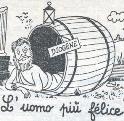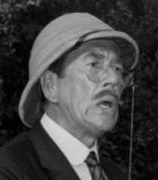|
Just curious, how modern can you get with traditional steam engines? What's the most modern/advanced steam locomotive ever built? Assuming not turbine, coal- or oil-fired. Prototypes or experimentals count too if they had an actually working model.
|
|
|
|

|
| # ? May 10, 2024 05:03 |
|
Pierzak posted:Just curious, how modern can you get with traditional steam engines? What's the most modern/advanced steam locomotive ever built? Assuming not turbine, coal- or oil-fired. Prototypes or experimentals count too if they had an actually working model. The big developments have been in heritage steamships and mountain railway locomotives, using oil-firing and automatic controls on the boiler and controls to allow one person operation for locos or the same size crew as a diesel ship. There is limited application for coal in advanced steam technology because it's a huge loving pain in the rear end and really dirty - there's a reason navies wanted to switch to oil as soon as possible around the time of WWI. This Swiss company is the leader in the field of advanced steam apparently: http://www.dlm-ag.ch/en/modern-steam
|
|
|
|
Also from Switzerland, attempts to heat the boiler using electricity: http://www.douglas-self.com/MUSEUM/LOCOLOCO/swisselec/swisselc.htm
|
|
|
|
Also, there's a good reason why UP has switched all its steam locos to oil instead of coal.
|
|
|
|
The other alternative that's doing the rounds is heatless locomotives, where you have a steam loco with no firebox and pump in steam or compressed air from a standing generator.
|
|
|
|
MikeCrotch posted:The other alternative that's doing the rounds is heatless locomotives, where you have a steam loco with no firebox and pump in steam or compressed air from a standing generator. Those have been around for a long time, namely in mining environments where you need to limit the exhaust and sparks.
|
|
|
|
IPCRESS posted:
It is mechanically stoked. This video was able to fill in the missing pieces I needed to understand what (I think) is happening to the Sandaoling trains. Eagerly awaiting Clarence's next post.
|
|
|
|
Clarence posted:Some basics of steam operation, with doubtless many tangents along the way. This has turned out to be much longer than expected, so it'll be just the burning of coal in a locomotive in this part and I'll cover steam itself later. That was bloody ace, thank you!
|
|
|
|
Clarence posted:Some basics of steam operation, with doubtless many tangents along the way. This has turned out to be much longer than expected, so it'll be just the burning of coal in a locomotive in this part and I'll cover steam itself later. This is great, and I just spent a couple hours going through everything in this series and figuring it out. It's cool that the reversing bar is the primary means of speed control, with the throttle/regulator being left full-open most of the time while the train is running.
|
|
|
|
Part 2. Last time fire, this time water. Steam locomotives (usually) have a fire tube boiler. This means that the hot gases from the fire travel through tubes surrounded by water causing it to heat up. The alternative, more commonly used on ships, is the water tube boiler where, you guessed it, the water does the travelling through the tubes.  A water tube boiler was tried on the LNER's W1 https://en.wikipedia.org/wiki/LNER_Class_W1 but it wasn't a great success and the boiler was eventually replaced by a standard A4 boiler. The firebox is almost completely surrounded by the water in the boiler and the fireman is responsible for maintaining the water level. The fire will burn at a temperature higher than the melting point of the firebox inner (very often made of copper) and the water is relied upon to remove that heat and prevent the firebox from collapsing. If the water level drops too low the crown (top) of the firebox will be exposed. Fusible plugs are inserted in the top of the firebox in case this comes to pass - these have a core made from metal with a lower melting point than the firebox itself. The theory is that if the water level drops too low the fusible plug will be the first thing to melt, resulting in steam flooding into the firebox and putting the fire out, hopefully before the firebox itself is damaged. An important job before lighting the fire is to put your head into the firebox (better hope it's cooled since the last time a fire was in there!) with a torch to inspect the state of the plugs. At the same time the stay heads are inspected to look for missing bolts or signs of weeping water. (Stays are metal rods connecting the inner and outer plating - in the water space - to prevent the plates distorting. The water level in the boiler is monitored using gauge glasses - the single most important bit of equipment on the footplate. Most UK locos use two (so it's obvious if one is blocked as the level could show a false reading), the GWR had to be different and only used one gauge glass plus a "try cock", a valve which can be opened - if water comes out then the level is above the valve, if steam then it's below. Not really the most sophisticated bit of kit. The visible part of the gauge glass is well above the firebox crown, so as long as water is visible in the glass then all is well. When first getting onto a locomotive in the morning one of the tasks is to momentarily drain the gauge glass and let it refill to check it is showing a true reading. This is known as "shaking hands with the loco". Spare gauge glasses (a glass tube about the size of a school chemistry class test tube, but open at both ends) are carried in case one breaks on the move. Of course, it's also possible to have too much water in the boiler. This is also a bad idea as liquid water could then pass through the system and cause huge damage. (More on this later). Therefore we just keep an eye on the gauge glass and we know exactly where the water in the boiler is. Simple as that. Er, no. Of course there are complications! Things that can effect the water level reading include: Going uphill - level is shown artificially high as more of the water is towards the back - better make sure there is plenty in there before going over the top of the hill! Going downhill - level is shown artificially low as more of the water is towards the front Applying the brakes - Level is low as more water is towards the front Regulator is open - level is higher than it would be if the regulator was closed 'Artificially high or low" are a bit misleading as it would still lead to catastrophe if the firebox crown was exposed while the water was towards the front of the boiler. A tapered boiler - narrower towards the smoke box than it is at the firebox end - reduces the effect when the water surges forwards. As (again usually) the steam isn't condensed after use and the water put back into the boiler then a mechanism is required to add more water. Injectors are used for this purpose.  An injector, in it's simplest form, consists of three cones. Steam is passed in a jet from the steam cone, through the combining cone where it entrains some of the water surrounding that cone, and eventually out of the delivery cone. The first two cones go from wide to narrow, increasing the speed of the jet. The delivery cone is the reverse, slowing the jet/water, thereby increasing the pressure and allowing it to pass through the clack valve and into the boiler against the pressure of the steam already in there. Operation is simple; turn on the water first (checking over the side of the footplate - it can be seen a couple of times in the Little and Often film, that it's coming out of the overflow), then the steam. The crew will know it's working properly by the sound made. There will be at least two injectors on a loco, usually one on the fireman's side and one on the driver's side. Injectors can be temperamental things, especially if they get too hot. One injector failing is enough to remove a locomotive from traffic until it is fixed. If both injectors fail then the procedure is supposed to be that the train is stopped, the locomotive uncoupled and then moved away to a "safe" distance. If they continue not to work then the fire has to be dropped - possibly including shovelling it out with a fire-iron through the cab and dropping it on the side of the track. Then get something non-flammable into the firebox - dirt, ballast etc. - into the firebox to absorb the heat and slow down the rate of steam generation. I know of a case where both injectors failed on a locomotive in traffic (i.e. pulling a train). The crew stopped the train and reported the problem. The way I was told it is that the water level was very low and a couple of fitters set off in a van to try and fix things - driving at up to 110mph on narrow roads and overtaking everything in sight. They arrived at the stopped train, only to find the loco still coupled to the train and the footplate crew sitting there drinking tea! The fitters fixed the injector problem with no issues, but the outcome was that the driver lost his 'ticket' and never drove again, while the fireman was reduced to being a cleaner (learner) once more. I'll do the next part - following the passage of steam through the locomotive - next week.
|
|
|
|
This poo poo is gold.
|
|
|
|
Clarence posted:"try cock"  Also, https://www.youtube.com/watch?v=1v00A6MpNCM
|
|
|
|
Pierzak posted:Just curious, how modern can you get with traditional steam engines? What's the most modern/advanced steam locomotive ever built? Assuming not turbine, coal- or oil-fired. Prototypes or experimentals count too if they had an actually working model. Technically speaking (though it involves a turbine) the Shinkansen are steam powered.
|
|
|
|
IPCRESS posted:Technically speaking (though it involves a turbine) the Shinkansen are steam powered. Then so is the NEC!
|
|
|
|
IPCRESS posted:Technically speaking (though it involves a turbine) the Shinkansen are steam powered. Huh? I thought they were full electrics. Using pantographs for their power.
|
|
|
|
IPCRESS posted:Technically speaking (though it involves a turbine) the Shinkansen are steam powered. if ur about to pull some "well the powerplant uses a steam turbne so..." poo poo, i swear to god im gonna fart on your gdamn head
|
|
|
|
.
sincx fucked around with this message at 05:55 on Mar 23, 2021 |
|
|
|
sincx posted:I think that's exactly it. Torus constructed entirely of Crookes radiometers, each hooked up to a little generator.
|
|
|
|
Maybe I've posted this here before but it seems relevant with the current discussion: http://csrail.org/ A group is trying to retrofit an existing steam locomotive and basically kick it all up to 11, hoping to get it to 130 MPH. The reason is they want to fuel it with biomass, and essentially make it carbon negative. The ultimate goal is to build a brand new steam locomotive using everything we've learned since we stopped building steam locomotives, since it's apparently more efficient (and with their biomass would produce less carbon) to run high speed trains with steam than with diesel.
|
|
|
|
FISHMANPET posted:Maybe I've posted this here before but it seems relevant with the current discussion: http://csrail.org/ By 'biomass' they mean Soylent Green, right? Best way to remove carbon emissions!
|
|
|
|
I am curious why water-tube boilers did not work on locomotives whereas they were absolute standard for ship power units. Any insight on that one?
|
|
|
|
Fire tube boilers are generally a bit more compact, and easier/cheaper to maintain, though they lose out on a bit of efficiency and operating pressure.
|
|
|
|
A modern steam locomotive would just be a non-gas turbine prime mover and look like any old diesel but with a lot more smoke
|
|
|
|
A steam locomotive that uses electricity to boil water
|
|
|
|
Kilonum posted:A steam locomotive that uses electricity to boil water Surely someone's tried the nuclear steam locomotive.
|
|
|
|
KYOON GRIFFEY JR posted:Surely someone's tried the nuclear steam locomotive.   One was never built, OR SO WE KNOW OF *xfiles theme*
|
|
|
|
http://steamcommunity.com/sharedfiles/filedetails/?id=948029446
|
|
|
|
.
sincx fucked around with this message at 05:55 on Mar 23, 2021 |
|
|
|
sincx posted:That's called an electric locomotive powered by a nuclear power plant. where's the fuckin fun in that
|
|
|
|
An atomic train but instead of electric motors it just blasts radioactive steam out the back like a rocket
|
|
|
|
MikeCrotch posted:An atomic train but instead of electric motors it just blasts radioactive steam out the back like a rocket Ah, the 1950's approach.
|
|
|
|

|
|
|
|
Cygni posted:
If this thing doesn't bellow anti-communist propaganda out of its vents whenever it moves then I would be extremely disappointed. Liberty Prime Mover
|
|
|
|
Whoops! http://abc7chicago.com/news/metra-employee-injured-after-train-derails-in-rail-yard/2245969
|
|
|
|
Part the third of steam loco operation. Locomotive boilers (this is the UK again) will typically hold a maximum pressure in the range 150-250 pounds per square inch, with the older and smaller boilers being on the lower end of the range. Newer/larger boilers will also tend to be superheated (of which more later). Every boiler has two safety valves, for obvious reasons. In the early days these would be a 'screw down' type that would allow the crew to adjust the setting if they wanted more power - with the inevitable result that pressure would eventually be raised too high and the boiler would explode... The boiler requires constant attention as long as there is a fire present. In 2012 there was the unfortunate death of a guard on the North York Moors Railway caused by a locomotive. Immediately afterwards the police wanted to 'lock down' the locomotive and stop anything being altered in the cab or anyone being in there. It had to be explained to them that that wasn't possible as it would have to be monitored (and water added as necessary) until the fire died, otherwise they would have a potential bomb on their hands. The driver has two basic controls for forward movement - the regulator and the reverser. These are broadly analogous to the throttle and the gears on a car. The driver opens the regulator to allow steam to leave the boiler and flow to the cylinders. The regulator commonly has two valves known as first and second valve. Also known as 'small' and 'big' valve, or 'pilot' and 'main' valve. The small valve will open first and allows for finer control, but on the road with a heavy load then big valve with maximum flow will be required. A non-superheated ("wet" or "saturated" steam) loco will send the steam straight to the cylinders (see the boiler picture in a previous post). A superheated loco passes the steam pipes through the smoke tubes to add extra energy to it.  If the water level in the boiler is too high then liquid water can be drawn out of the boiler as well as steam. This is known as priming and is Bad News - see mention of drain cocks later. Steam then arrives in the steam chest at the cylinders. 2, 3 or 4 cylinders are normal (the combination of cylinder, valves, valve gear etc is called the engine, so one locomotive actually has multiple engines). Depending on the size of the cylinders they can be located between the frames of the loco, or outside, or both! A small shunting loco would typically have two small cylinders between the frames, large express locos two cylinders on the outside and one or two between the frames. After being used to work the pistons the steam, now referred to as 'exhaust' steam, passes into the smoke box through the blast pipe and out through the chimney. The reason for this is that it creates a draught to draw the air through the fire and increase the rate of combustion. This is what produces the characteristic 'chuff' of steam coming out of the chimney. There is a valve on each cylinder, called the 'cylinder drain cock', that can be opened from the footplate. This is opened before first setting off and then closed after a few seconds of movement. The reason for it is that after not being used for a time the cylinder will cool down and any steam still present will have condensed. Liquid water is incompressible and there is not a lot of space inside the cylinder when it's at the end of its travel. This can result in major damage, such as the end of the cylinder being blown off, a bent rod, etc. Skip to the 5 minute mark on this video https://www.youtube.com/watch?v=oFDWpaC9OIM to see the potential for damage (although in this case there is a theory that it wasn't caused by water but an internal failure). If you see a steam loco setting off and throwing large amounts of steam directly in front of it near track level, that's the drain cocks in operation. The reverser is used for two purposes. As its name suggests it controls the direction of travel. It's also used to control how the steam is being used in the cylinders. Steam under pressure does its work by expanding and pushing the cylinder. It's arranged so that when one side of the piston is admitting fresh steam at high pressure, the other is releasing the lower pressure steam that has done it's work - so the piston is 'double action'. The reverser controls how long steam is admitted to the piston at full boiler pressure. The longer it is admitted for the stronger the stroke of the piston, but the less efficient the system is overall, as by the end of the piston's travel the steam has not expanded as much as it could have done and so some of its energy is wasted, which means some of the coal and water put into the boiler isn't being used fully, and the poor old fireman is getting tired arms for nothing. The point at which the steam stops being admitted is known as the 'cut off'. When starting a heavy train or travelling up a steep hill the cut off will be 'long', up to around 70% or so. Therefore full steam pressure is being applied for 70% of the piston's travel, and expansion of the steam just the last 30%. Once moving freely the reverser is 'wound back' and cut off could be 20-30%, so using the expansion of the steam much more. The regulator is a lever - if you see a long lever painted red mounted on the back head then that is the regulator. The reverser can be arranged a few different ways. A long lever mounted on the floor (usually for small locos) is one way. What looks like a wheel for the driver is another way - the source of the 'wind back' term. Some locos will have a steam-powered reverser, a small lever than can be moved a short way back or forth, and then the actual reverser motion happens behind the scenes and all that is shown to the driver is an indicator on a scale. I'm away on holiday next week. Once I'm back I'll try to get some labelled pictures uploaded so everyone can see what the various controls actually look like, plus cover any bits and pieces I've forgotten - of which I'm sure there are many. someone remind me if it seems like I'm forgetting in a couple of weeks.
|
|
|
|
So I was in the highlands of Scotland last week and saw something that made me think of this thread and Axeman Jim in particular. This handsome beastie here ....  It's the prototype Pacer that was rejected by British Rail as being 'too Apparently it's been sitting at Dufftown for a while. It was up there before they had a running railway, just a bit of track. They ran it up and down a bit until one of the engines blew and it's currently by far the ugliest thing in a beautiful part of the world.
|
|
|
|
Clarence posted:Part the third of steam loco operation. Thanks for another awesome post. Learning a lot about steam engines!
|
|
|
|
http://www.reuters.com/article/us-csx-disruptions-idUSKBN1AH4OV?il=0 Aahahahhaha
|
|
|
|
http://www.kbtx.com/content/news/Railroad-workers-facing-pest-problem-at-Hearne-hotel-438195343.html
|
|
|
|

|
| # ? May 10, 2024 05:03 |
|
Yeah he sure seems to be screwing the pooch big time. This article is... interesting. http://www.railwayage.com/index.php/blogs/william-vantuono/whats-going-on-at-csx.html
|
|
|










































